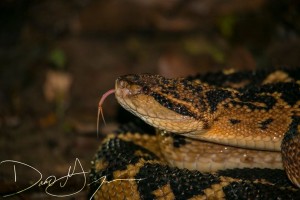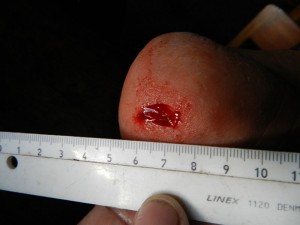IMPORTANT NOTICE
Anyone wishing to visit Cocha Cashu must be able to show on entry to Manu National Park that they have received vaccinations against yellow fever, pneumococcus, influenza, tetanus, hepatitis B, and measles. This means you must have an appropriate official document to hand, signed and stamped by a doctor or by the Ministry of Health (hospital, medical post, etc.). In the case of influenza, you must have received the vaccination within a year prior to your visit to Cocha Cashu. Some vaccinations may be available at the medical post in Boca Manu but you will be required to stay 10 days in Boca Manu before you will be allowed to enter Manu National Park, so we strongly advise you to come already well vaccinated. These precautions are necessary to protect the indigenous Matsigenka population living beyond the tourism zone of Manu, where the Station is also located. For this reason, no exceptions will be made, not even if you are allergic to any of the vaccinations.
You will receive a light screening at Boca Manu to check if you have your shots, and be asked questions about any recent fever, headaches or similar symptoms. We therefore recommend that, around 15-20 days before travelling, you take extra care to avoid sick people or potentially infected environments. While travelling from Lima to Cusco and from Cusco to Cashu, drink only bottled water. En route from Cusco to Cashu, avoid meat since controls in local restaurants may not be adequate.
With these simple measures you can ensure you will arrive in Cashu in good health so you can make the most of your stay.
Health and Safety
Everyone should make sure they are up-to-date on all recommended vaccinations. You can check out the most recent information provided for the region by looking at the web site of the Centers for Disease Control, (click on Traveler’s Health). Standard immunizations include: yellow fever, typhoid, influenza, tetanus, and hepatitis A and B. Malaria prophylaxis is optional, though a US or European physician is likely to insist that you take it as a precaution. We have not yet had a malaria case at the Station (in 50 years of operation) and none of the staff take anti malarials.
It is important to tell your doctor that you will be in a very remote region with no medical care available. Bring supplies of any medications you use regularly or occasionally. The station maintains a basic medical kit, including antibiotics, first-aid supplies, and polyvalent antivenom but the station does not accept responsibility for having on hand any possible drug or therapeutic device that might be needed in an emergency.
 Prospective visitors should be keenly aware of the station’s remoteness. In the event of a life-threatening emergency, a helicopter can be chartered to land at Boca Manu (a day’s travel by boat downstream) in good weather. In bad weather, a patient would have to be evacuated through Puerto Maldonado, a 2-3 day river trip downstream. Evacuation all the way to Lima is highly preferable, but will require another day after reaching Puerto Maldonado. Be advised that the cost of an emergency medical evacuation will be in the thousands of dollars and will be charged to the patient. Personal health insurance is therefore highly recommended. In case all this is alarming, you should also know that in the 50-year history of the station, no one has yet had to be evacuated in a life-threatening situation.
Prospective visitors should be keenly aware of the station’s remoteness. In the event of a life-threatening emergency, a helicopter can be chartered to land at Boca Manu (a day’s travel by boat downstream) in good weather. In bad weather, a patient would have to be evacuated through Puerto Maldonado, a 2-3 day river trip downstream. Evacuation all the way to Lima is highly preferable, but will require another day after reaching Puerto Maldonado. Be advised that the cost of an emergency medical evacuation will be in the thousands of dollars and will be charged to the patient. Personal health insurance is therefore highly recommended. In case all this is alarming, you should also know that in the 50-year history of the station, no one has yet had to be evacuated in a life-threatening situation.
Contracting leishmaniasis is a real possibility at Cashu. The disease is transmitted by a tiny, transparent fly that holds its wings up at a steep angle when at rest. The flies are most abundant in moist places in the forest, especially under fruiting trees, but have also been seen in the Station offices. Wearing long sleeves and pants, and using repellent at dawn, dusk and night, will significantly reduce your chances of infection.
One of the biggest potential dangers at Cashu is the possibility of a tree or branch falling on you. This is particularly true during storms. If you are caught in the forest in a storm with high winds, and you’re more than a few minutes fast walk to the Station, find a large, healthy looking tree and stand close to its trunk until the storm abates. DO NOT move around in the forest during strong winds.
IMPORTANT
In the past we have had outbreaks of fungal infections (resistant to most fungicides, except Ketaconazol), conjunctivitis, giardiasis and creeping eruption (ancylostomas): however, there have been no recent cases. Nonetheless, we recommend you bring your own medication. The station will charge you for the use of station-specific medical supplies (e.g. antibiotics).
If you have any potentially life-threatening allergies, especially food or insect bite allergies, you should really think twice about coming to Cocha Cashu.
Recommended Medications:
◾ Altitude sickness pills (Cusco)
◾ Antacids
◾ Anti diarrhea
◾ Antibiotics: ciprofloxacin, amoxicillin, tetracycline
◾ Antihistamine (Benadryll)
◾ Paracetamol and minrow wound dressings
◾ Medications for foot fungus (ketoconazole, as there are several types of resistant fungi)
◾ Hydrocortisone cream
◾ Pills against malaria (which requires a prescription, although no cases reported)
◾ Optical antibiotics (esp. w / contacts), Terramycin
◾ Antibacterial otic (otitis externa)
◾ Pain reliever (with prescription)
◾ Sunscreen (for travel by river)
◾ Topical antibacterial cream
◾ Tylenol / Advil
◾ Metronidazole (Flagyl) for giardiasis
◾ Talcum powder for feet (highly recommended)

